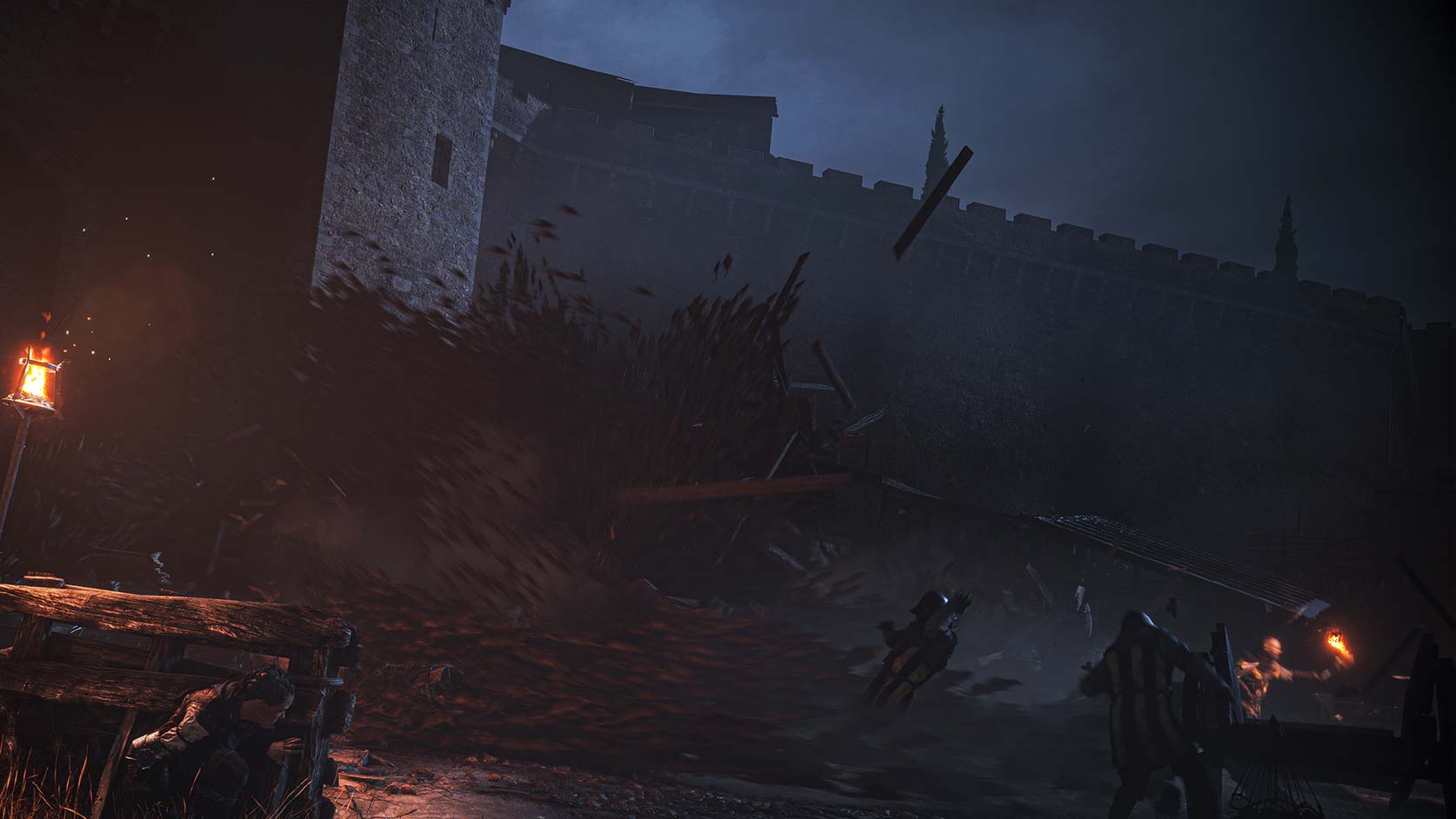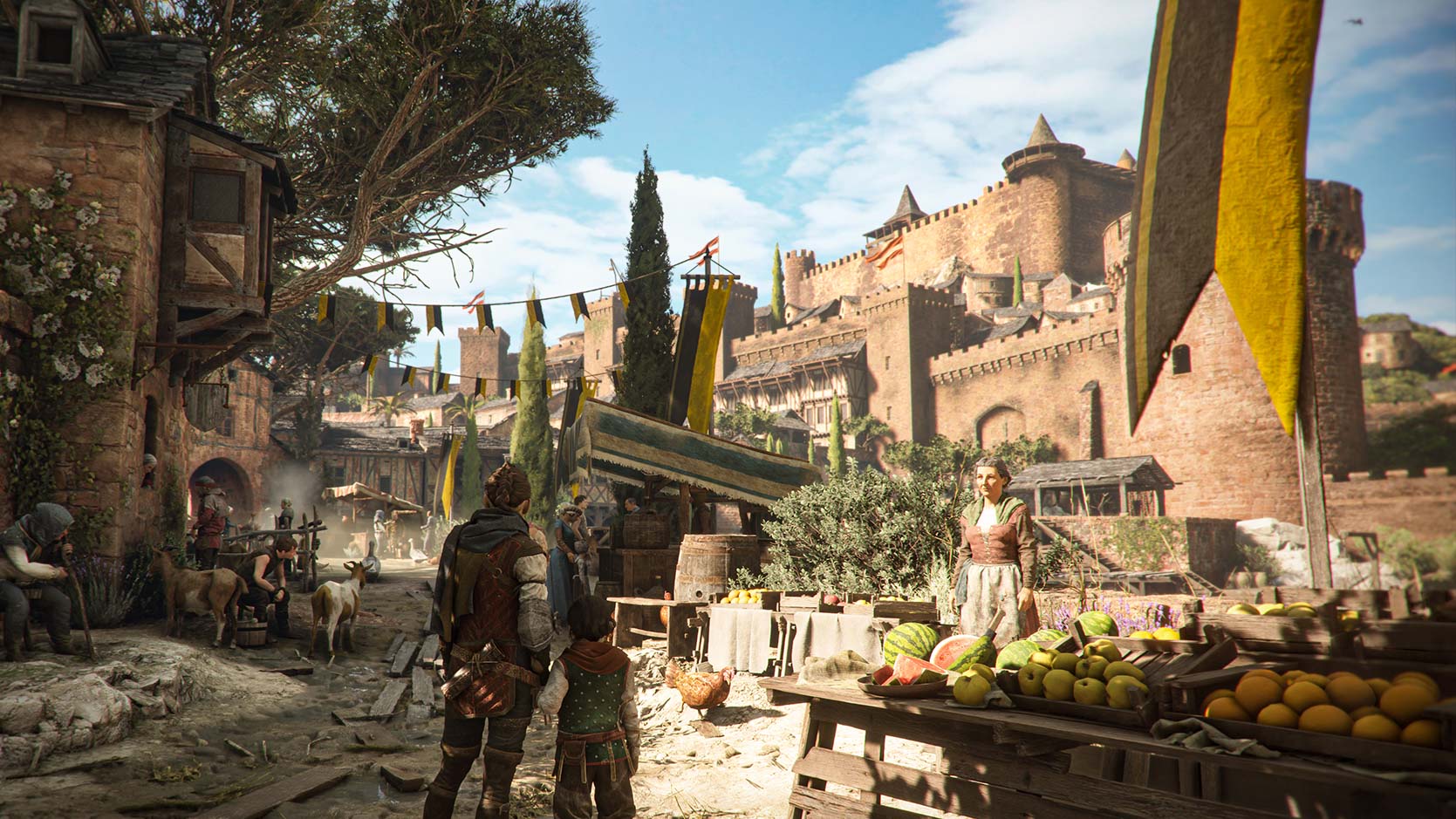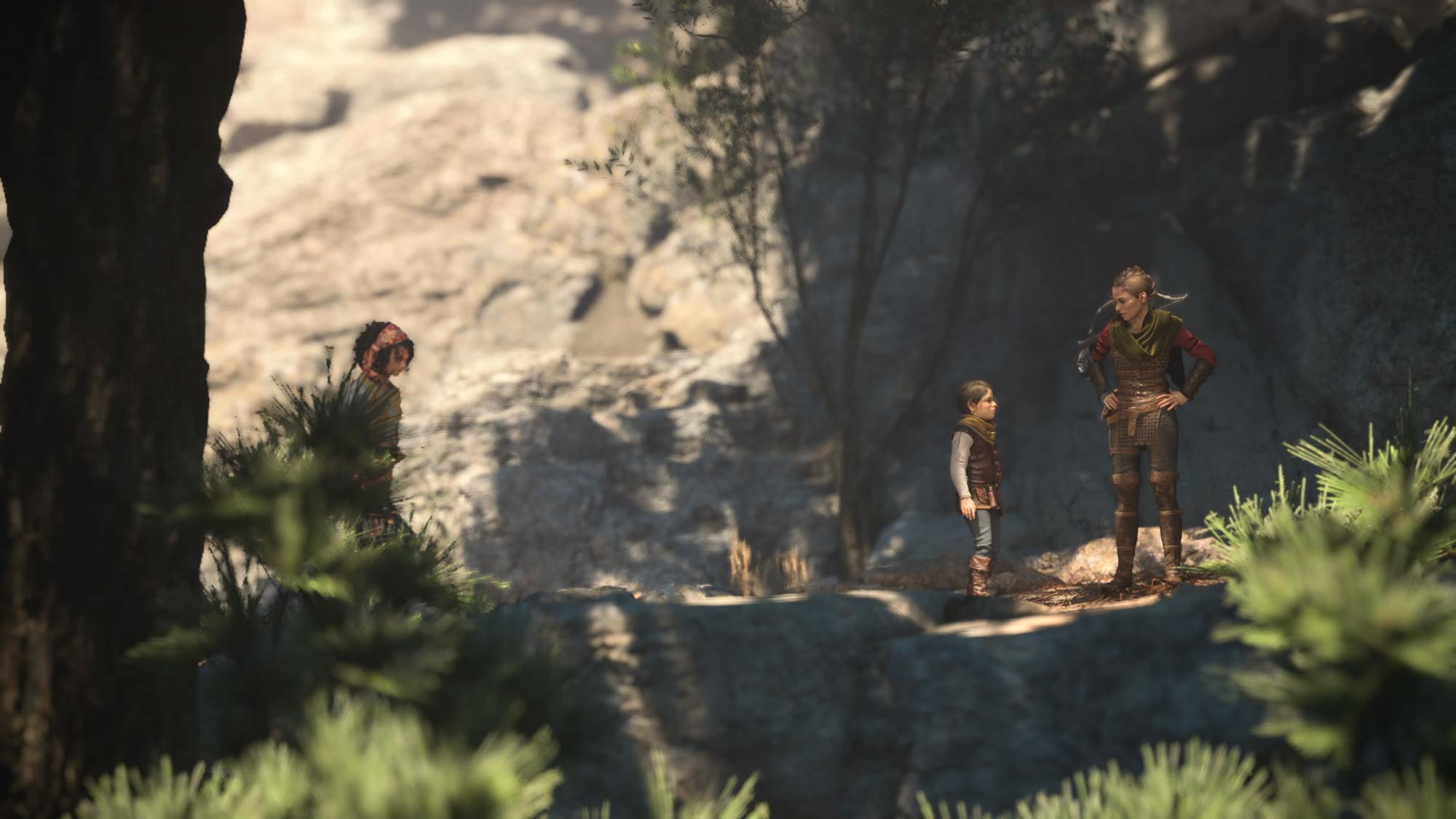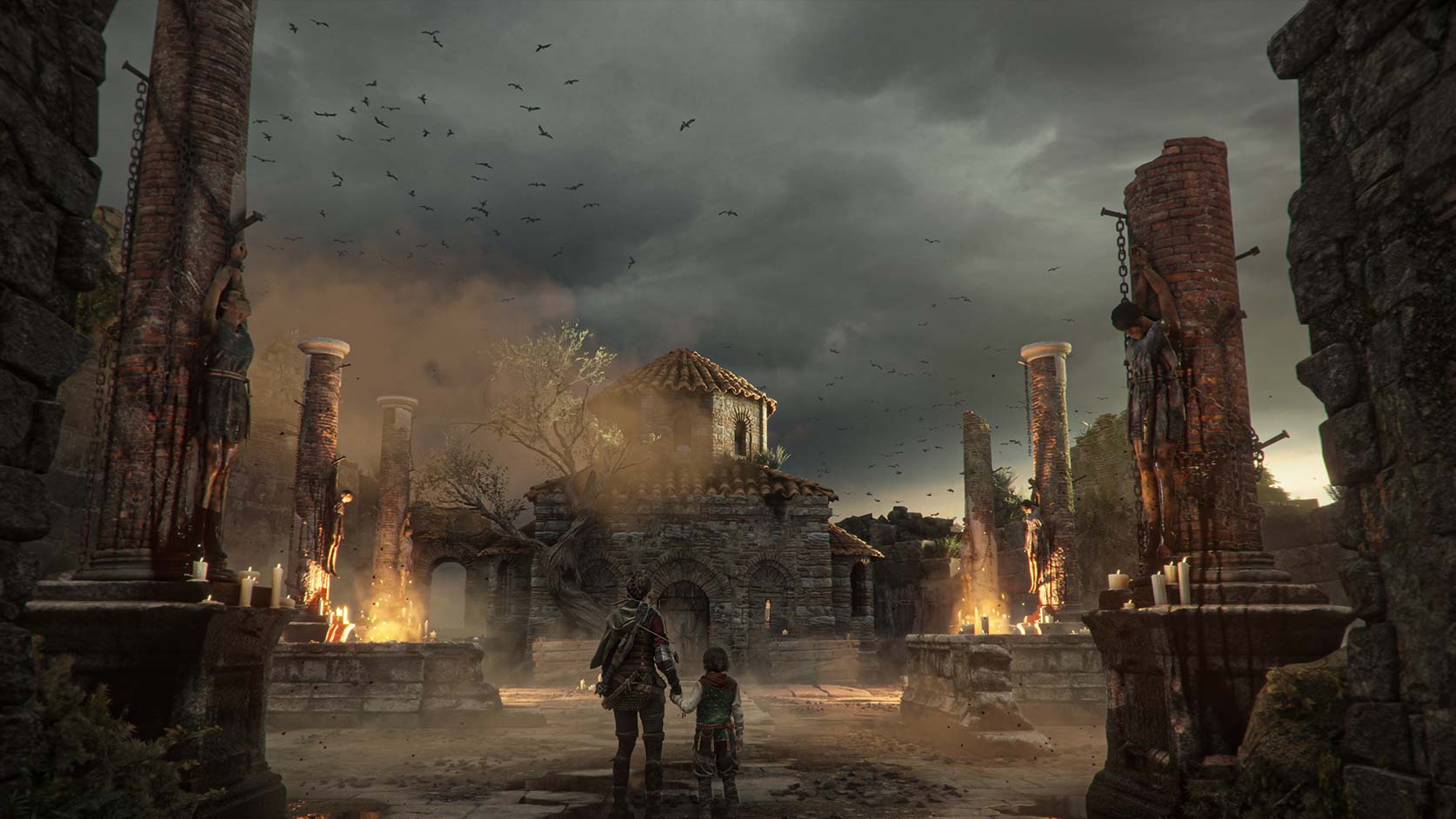Tom's Guide Verdict
A Plague Tale: Requiem is an engrossing tale about a pair of siblings trying to survive the horrors of the Inquisition and hordes of hungry plague rats. It boasts a strong linear narrative with engaging characters and challenging stealth puzzles. Strange character animations and limited combat hold it back from being best in class.
Pros
- +
Strong linear narrative
- +
Engaging characters
- +
Challenging puzzles
- +
Meaningful skill and upgrade progression
Cons
- -
Limited combat
- -
Uncanny valley facial animations
Why you can trust Tom's Guide
Platform: PC, PS5 (Reviewed), Xbox Series X/S
Price: $60
Release Date: October 18, 2022
Genre: Action-adventure/stealth
A Plague Tale: Requiem is an action-adventure stealth game set in 14th-century France, which blends historical fact with fantasy elements to create a harrowing story of survival. As Amicia de Rune, you need to dodge members of the French Inquisition and hordes of plague rats while attempting to cure your brother Hugo’s blood disease.
Dealing with Inquisition soldiers and the plague rats can be difficult, as it requires a combination of stealth, alchemical knowledge, puzzle-solving, resource management and combat. Surviving various gauntlets of soldiers, rats and maze-like maps makes up the majority of the gameplay in A Plague Tale, but it’s the story of Amicia, Hugo, Lucas and Beatrice that makes those puzzles worth the trouble.
A Plague Tale: Requiem is Asobo Studio and Focus Entertainment’s sequel to 2019’s A Plague Tale: Innocence, which introduced siblings Amicia and Hugo and their search for a cure. While Requiem is a direct sequel, knowledge of the first game isn’t required to enjoy it. The game tells you everything you need to know early on, so you can enjoy the action, adventure and tragedy that make up the majority of the experience. That tragedy is one well worth playing, as we’ll discuss in our A Plague Tale: Requiem review.
A Plague Tale: Requiem review: Gameplay
A Plague Tale: Requiem is a stealth/action game focused around solving the mystery of Hugo’s blood disease and finding a cure. You overcome various obstacles, solve puzzles, and traverse mazes of enemy soldiers and hungry plague rats by using a combination of stealth skills, alchemy and direct combat.
The game's stealth system is pretty advanced, with options to blind, stun and misdirect enemies with alchemy, thrown objects and the environment itself. The primary difference in A Plague Tale: Requiem's difficulty settings is how well the enemy AI observes, detects and reacts to Amicia, Hugo, and their allies. For example, the AI is quicker to notice Amicia on higher difficulty settings, and stays distracted for less time.

While A Plague Tale: Requiem is primarily a stealth game, you can and do engage in combat at several points. Your options for direct confrontation are pretty limited, however. Amicia specializes in ranged weaponry. Her sling, for example, is her only weapon with unlimited ammunition, making it the most useful tool in her kit. Amicia can also throw rocks, alchemical tools and pots to attract attention or spread her alchemy in a wider area of effect.
In Requiem, Amicia also picks up a crossbow after the first few areas, which comes with only enough space to carry between two and four extra bolts. As one of the more lethal weapons in the game, the crossbow has these restrictions so that players don't disregard stealth entirely. Amicia is also limited to one knife for similar reasons. While you can pick up more bolts and knives, or even upgrade your crossbow so that you can scavenge used bolts, these tools don’t pop up often.

The only real downside to Requiem's gameplay is that many levels have multiple paths and solutions, which can make the endpoint a bit tricky to find. Some areas are straightforward, but every now and again, you'll find yourself dodging enemy patrols, wondering where exactly you’re meant to be sneaking toward. It's hardly a comforting prospect.
A Plague Tale: Requiem review: Character progression
Because stealth, combat and alchemy are the game’s primary gameplay systems, your skill progression tree focuses on these three areas. If you use alchemical crafts, you'll unlock more perks in the opportunism tree, while if you use more stealth and avoidance tactics, you'll unlock perks in the prudence tree. As the perk system adjusts to your own gameplay style, the upgrades unlock automatically as you play. You can specialize in one area, or become proficient in all three, based on your decisions in-game.

You can also upgrade your equipment with the right materials, which means you can carry more pots and crossbow bolts, fire two rocks from your sling at once or improve your alchemy. There are only three upgrade tiers for each piece of equipment, so you can quickly customize your playstyle.
The game often creates situations that require you to branch out of your comfort zone, but most of the levels allow you to navigate your own path through the mazes of enemies and hordes of rats. The perks themselves are rather simple, such as making your alchemy more cost-efficient, or softening your footsteps. These enhancements all contribute to a gameplay system that feels meaningful.
Get instant access to breaking news, the hottest reviews, great deals and helpful tips.
A Plague Tale: Requiem review: Story
A Plague Tale: Requiem takes place during the Hundred Years’ War, which coincided with an outbreak of the Black Plague and the ongoing trials of the French Inquisition. The backdrop of the game is itself a tragedy, but the story of Amicia and Hugo is also rife with horror and despair. While there are some lighthearted moments in the game, the majority of the running time is devoted to dodging agents of the Inquisition, mercenary soldiers of various political figures, slavers and hordes of hungry plague rats. It can be a lot to get through.

The plot itself revolves around the mystery of Hugo’s blood disease, the Prima Macula, and the siblings’ search for a cure. Amicia and Hugo's search takes them all around southern France, from medieval cities to ancient ruins and Mediterranean islands. Despite being a direct sequel, Requiem does a fantastic job of getting new players caught up on the previous game throughout the early levels. You don’t need to have played Innocence to fully enjoy the story here.
The protagonists are also easy to approach for new players, while the villains feel suitably evil, but not irredeemable. This gives Amicia and Hugo’s actions a real weight, aside from the obvious trauma that both siblings must deal with as they go from horror to horror.

As engrossing as the tale is, the constant emotional devastation can make the story feel like a slog at times. It's an effective bit of immersion, as you want things to be over just as much as Amicia and Hugo do. A Plague Tale: Requiem is not a particularly long game, but the subject matter is heavy, with only a few small breaks for levity, which makes the experience feel twice as long.
There are a handful of sidequests, but most of those are easy to complete alongside the main story, so they can’t provide much of a diversion. In all respects, this is not a game to binge-play. The different chapters come with brief recaps of the story so far, so taking a break between game sessions is a good idea.
A Plague Tale: Requiem review: Visuals and sound
When it comes to scenery, A Plague Tale: Requiem is a gorgeous game. The zones and levels all look absolutely stunning, with immense attention to detail. That approach also holds true when you’re wading through a mass grave or a butcher’s slop pit, which look suitably horrific. The game does not shy away from some necessary gore during its most disgusting moments.

Unfortunately, that gorgeous detail falls apart when it comes to the characters. While the developers intricately crafted all of the models to look as real as possible, the characters fall down a bit when it comes to the facial animations during cutscenes. Amicia, Hugo and the rest of the cast look ever-so-subtly wrong in a way that brings the Uncanny Valley to mind. While the animations are a step up from those in the previous game, they’re still just off enough that you can’t quite get over it.
The sound design is pretty unobtrusive. As the characters whisper most of their dialogue while sneaking around their enemies, the background sound has to be quiet and realistic. There are some haunting songs in certain scenes, all designed to give the emotional punches of the story a greater impact. It makes for an immersive experience, despite the rather minimalist nature of the soundtrack.
A Plague Tale: Requiem review: Verdict
A Plague Tale: Requiem puts stealth first, and doesn't rely much on combat. If you accept that stealth will be an integral part of the game, then you should have a satisfying gameplay experience. The storyline and characters are engrossing, although the plot can be emotionally draining. Things are bleak for Amicia and Hugo in an already dire time period.
The game’s only major flaws are its stilted character animations, limited combat options and occasionally confusing level design. If you’re up for a depressing story about a pair of siblings trying to survive the Black Plague, there’s a lot to enjoy about A Plague Tale: Requiem, from the characters to the progression system.

